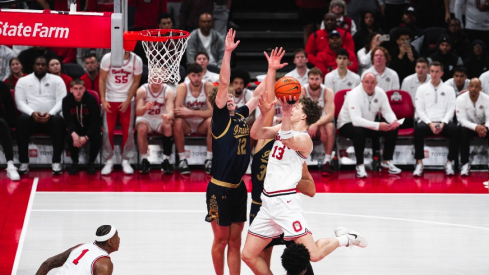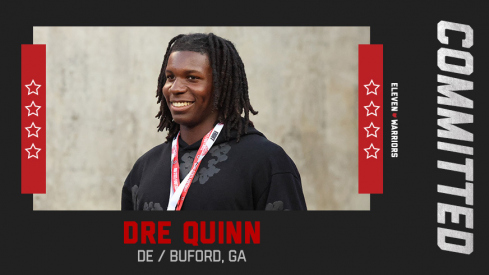 The Columbus Horizon was the city's CBA team until 1994
The Columbus Horizon was the city's CBA team until 1994If Columbus Mayor Michael Coleman has his way, The Ohio State University men's basketball team will no longer be the only basketball tenant in town. A Thursday report by the Columbus Dispatch revealed the city is now actively soliciting an NBA franchise.
According to the report, Coleman sent a sternly-worded letter to NBA commissioner David Stern, expressing (read: pleading) his desire to attract an NBA franchise for the city of Columbus. The NBA, which threatened the player's association with possible contraction last summer during collective bargaining agreement negotiations, has made it clear that expansion is not in its immediate plans.
More likely, a possible franchise would have to come from an existing team.
For the last two years, the most tenuous of NBA members has been the Sacramento Kings. Kings' ownership and Maloof family, led by Gavin, has been working with the city of Sacramento in attempts to replace the aging Power Balance Pavilion (formerly Arco Arena), which just a few years ago reached legal drinking age. Last month, a possible deal for a new arena fell through, leaving the future of the Kings very much in doubt. Reportedly, the Maloof family has developed a fondness for scouring real estate in Anaheim as a hobby on the side.
While the NBA has unofficially endorsed the idea of a third Los Angeles-market team based out of Anaheim, the Lakers and Clippers both would strenuously object to such an arrangment by most accounts. In order to relocate, the team must receive a majority approval from the league's 30 owners. The Toronto Raptors and Detroit Pistons have also been named as relocation candidates. The New Orleans Hornets have been managed by the NBA for the past few seasons, although recently a new ownership group has stepped to the table and a lease has been extended by the city through 2024, likely sparing the Hornets from moving.
Basketball fans in Columbus are left with three pressing questions: can the city support an NBA franchise; what will this do to OSU basketball; and would the Kings continue to suck as badly as the Blue Jackets?
Columbus has been dormant from professional basketball for 18 years since the Columbus Horizon, of the now-defunct Continental Basketball Association, left for greener pastures as the Shreveport Crawdads. The franchise ultimately folded in 1996 after 13 seasons in the league and stops in five cities. The CBA finally went under in 2009 after it fell to four clubs.
The Horizon existed for five seasons in Columbus, finishing last place in the Eastern Division in four of the five years. The last two years, the club finished near the bottom of CBA attendance, drawing just over 1,700 fans a game at Battelle Hall in the Columbus Convention Center. In fairness to basketball patrons of the capital city, the club's marketing strategy included the hiring of former Michigan man, Cazzie Russell, as head coach in 1992. Though I can't confirm, it wouldn't surprise me if further research turned up "Maize & Blue Night" as one of the team promotions.
It's not that Columbus couldn't support a professional franchise. After all, the ECHL's Columbus Chill was a smashing success for the city, selling out a league record 83 straight games beginning in January of 1992. It was the Chill's unparalleled support that attracted the NHL to Columbus. In 1997, Columbus was awarded an NHL franchise and started play at Nationwide Arena in September 2000.
For the first half of the team's existence, the Blue Jackets finished in the upper half of NHL attendance. However, the success, or rather lack thereof, has dropped the CBJ into the bottom quadrant over the past four seasons. Because of diminishing attendance due to making the playoffs only once in 11 years and an unfavorable lease through the arena's ownership, the franchise was in danger of leaving. However, last September Franklin County rescued the team by buying the arena and reaching a deal to keep the club in Columbus. The city is hoping to attract an NBA team as a second tenant to better finance the acquisition.
 The Kings are the city's best shot at luring an NBA franchise
The Kings are the city's best shot at luring an NBA franchiseNow it's a matter of whether Columbus has what it takes to lure -- and preserve -- an NBA team.
Some say that's as likely as the Mayan Calendar ending in 2012. Call me an optimist.
According to the latest Nielsen Media release, Columbus ranks No. 32 in terms of Designated Market Area size with an estimated 932,680 tv-equipped homes in the market. Salt Lake City (927k), Milwaukee (907k), San Antonio (881k), Oklahoma City (712k), Memphis (670k) and New Orleans (644k) are the existing teams with smaller markets. When television deals are negotiated with networks, DMAs typically impact the tiers in which cable operators place certain networks. So when a club negotiates media rights, the size of the market has a huge impact on the size of the deal.
Yes, gentlemen, size does matter.
Television ramifications are not the only consideration. The population within the area is also important as it can impact potential attendance. As of April 2010, the U.S. Census lists Columbus as 1.8 million people in its core-based statistical area, ranking ahead of Charlotte, Milwaukee, Memphis, Oklahoma City, New Orleans and Salt Lake City.
Since moving to Oklahoma City from Seattle, the Thunder has been a relative success in terms of support. Though partially because of the marketability of superstar Kevin Durant, the Thunder averaged 18,203 this season in 33 home games as one of the league's best teams. Columbus, though, would have to support both an NBA team and a major university. This is the part of the conversation where cynical Buckeye fan usually adds, "Ohio State can't even support its basketball team."
Despite the cynics, there is some anecdotal evidence that it can.
The Memphis Grizzlies might be the best litmus test for whether Columbus and Ohio State can coexist. With the exception of 2008 and 2009, the Grizzlies have pretty consistently averaged between 14-16,000 people since moving from Vancouver. While that hasn't shattered any records, it has fit nicely with the Memphis Tigers.
Since the Grizzlies arrived, Memphis has averaged 15,631 a game for Tigers' home basketball games between 2001-2012. The average national rank for Memphis in NCAA Division I men's basketball has been 13. Ohio State, meanwhile, has averaged 15,768 during the same timeframe with an average national rank of 11. This suggests that given a larger market than Memphis and similar fan support, Columbus can indeed support an NBA franchise. It also shows that the Buckeye faithful has heard of the game invented by Dr. James Naismith.
Interestingly, the Memphis attendance has actually improved since the Grizzlies came to town. In the previous 12 seasons, the average Tiger home basketball game drew 12,505 people. Granted, the Grizzlies' arrival coincided with the hiring of John Calipari and shortly thereafter, moving out of The Pyramid Arena and into the FedEx Forum. Nonetheless, they are a living example that a city the size of Columbus could support both.
Calipari seems to agree. Calipari, who saw the impact the Grizzlies had on Memphis up-close-and-personal, has been outspoken about bringing an NBA team to Louisville. Calipari believes it would be good for Louisville and the state of Kentucky, but also for both college programs.
"It will never take away from the University of Kentucky, never, ever," he said in an AP interview in 2010. "It will never take dollars away, it will never take seats away."
Of course Louisville and Kentucky are often 1-2 in national attendance, so comparing them to Ohio State is apples-to-oranges. Nonetheless, Calipari added there are inherent advantages to recruiting with an NBA team in your own backyard.
"The recruiting for Louisville will go up because there will be pro scouts in there every day," he added. "That's what happened to us in Memphis, every day, because they're going in to see the pro team that night. Where do they go that afternoon? They go to the gym to see the college players."
Louisville coach Rick Pitino sees several advantages to having an NBA team in Louisville, though his concern was over the economic feasibility for local families. The Bureau of Economic Analysis puts out an annual personal income report by metropolitan area and his concerns are not unfounded. Louisville, in 2010, averaged $48,968 per person. Memphis averaged $50,613 whereas Columbus is a healthier $70,619. The three cities have a nearly identical cost of living index, which means Columbus has more disposable income to support a professional franchise.
Columbus also has a higher rate of income than NBA cities Charlotte, Indianapolis, Milwaukee, New Orleans, Oklahoma City and Salt Lake City, and nearly identical to Cleveland, Orlando and Sacramento. More disposable income means more money to waste on $7 beers and $10 foam fingers. Forget dime-a-dog-night, Columbus. You know you want extra opportunities to boo LeBron James.
This all may be a moot point. There doesn't seem to be many vacancies at the inn right now for C-bus. The Maloofs might find their happy home in the city of Angels (Anaheim, that is) and this could turn out to be nothing more than Coleman's pipe dream. But there is certainly some indication that this could work.
The NBA is an attractive selling point for a college coach. Thad Matta actually enjoys having the football program to sell. I would be surprised if he has anything negative to say about this idea, having a possible NBA team in his home city to sell to recruits. Provided the Columbus Kings, or whatever incarnation we'd see, didn't go out and start hiring UofM graduates as coaches, Columbus could make this work. OSU could too.
For now I'll ignore the pressing consideration that roommates rarely ever work out with a happy ending. If Coleman pulls this off, my suspicion is that it will turn out better than the Horizon. Let's just hope they suck less than the CBJ. That's the question that remains unanswered.

